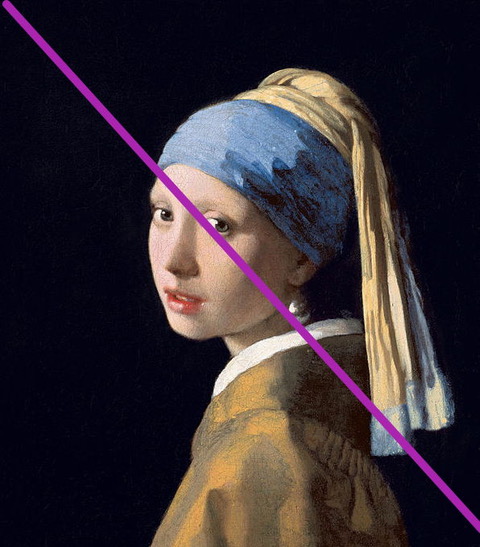
Just like using color harmonies, planning compositions can be a complex issue. And if anyone knew how to plan out composition, it was Vermeer…
One of the reasons we like to look at paintings is that reality is filtered through someone else’s vision. Painters select the important elements out of all the infinite detail that meets our eyes. That means composition is king when it comes to an interesting painting. No matter how a painting is presented, good placement of all the elements in a painting is important. This means the background is never secondary to the focus of a work, rather, it is an integral part of it. A painting is an entire puzzle of shapes and relationships.
You may have heard of the term “armatures” in regards to how some artists plan out their compositions. I can’t get into the entire explanation on how armatures work, there are so many systems and beliefs, but I can show you how one mentoree started to use diagonals to design a sound composition.
The painting above is the famous oil painting, “Girl with a Pearl Earring” by Vermeer. Notice something? The diagonal I added to the painting runs right through her eye and the earring – the important elements of the painting to the artist. This placement was not accidental, and if you get a chance, look up how Vermeer used diagonals to construct all of his images. It is quite fascinating.
This mentoree started to design a painting of a little child on the beach. This is the beginning drawing. He carefully thought about the placement of the boy while positioning him on the “intersect” of some diagonals. These intersections are called “harmonics” or the “sweet spots” of the painting. The diagonals serve as “supports” by leading the viewer from the outside edges of the work to the main focus areas.
Original reference…

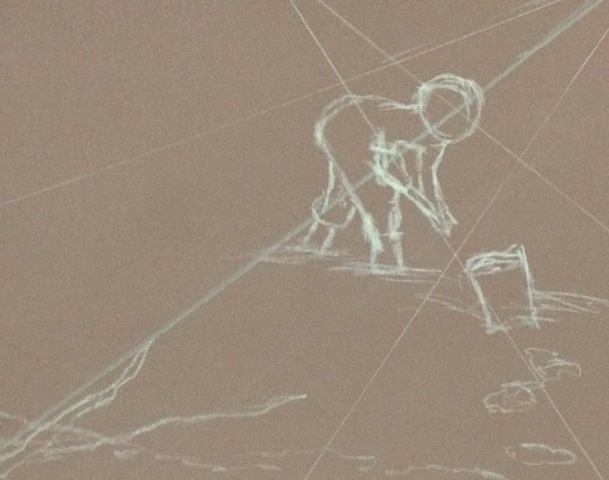
The intersections are shown below in the pink spots. These are important areas to put the main focus areas of a painting. Things that are important to the artist. Here, the activity of the child and especially the hands and head. So this artist was able to locate the child ON these sweet spots.
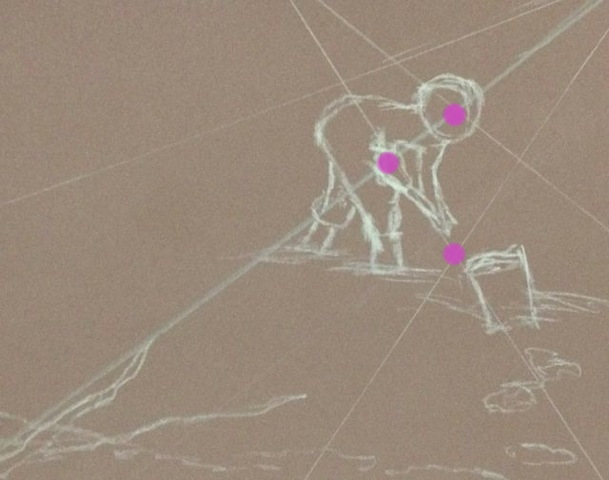
Then the diagonals go to work to help support those spots. For example, the “lean” of the bucket can help to point to the hands. The diagonal from the bottom left to the top right can help “point” to the child’s head like below.
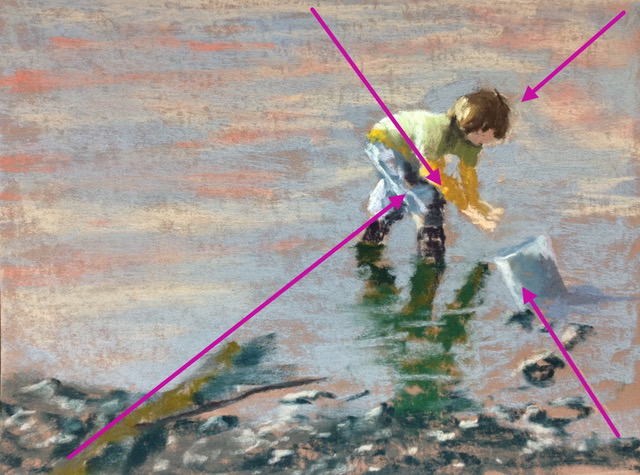
And if the background (water area) were adjusted just a tiny bit to add “support” to those lines, (I added tan shapes to run along the pink arrows) then the composition could be strengthened just a bit more like below…
Now there is no question of what is important. (Like in an opera on stage, the fat lady is singing and she stands out from all the rest while the rest of the singers nod and look to her.) So the water, the grasses and the bucket all play their part. Cool huh?
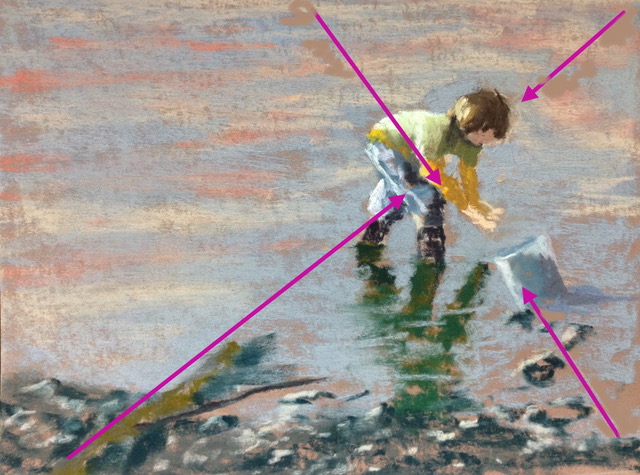
Try it! Even if you can find one or two diagonals and use them to “lead” to the main character in your painting, you are off to a stronger composition.

Thanks again!
:). sure! You will be happy to know I have met with an editor and I am starting the process of putting together my book!
Cannot wait for your book!!
me too!!!
Thank you, this is so helpful!
🙂
Christine–Bravo! Design is king! Design is Queen! To add: years back, I saw a documentary about the making of “We Are the World” song. Quincy Jones was the producer. One thing he said that stayed with me is that he always tells his musicians, “No matter how much we practice, no matter how much we plan, when we go to record, always leave a little room for God to walk through the studio.” What he meant was to, at the moment of the execution of the planning, KEEP THINKING. Leave that psychological and emotional space to still be creative while working. When I first started connecting the graphic design principles to my drawings and paintings, I had them, in my mind as a rigid blueprint. But it didn’t take long to, in my own way, heed Q’s advice as I began to see my PLAN is a GUIDE. I can still tweak it and make discoveries along the way…and should! As I do more, I see more. Heck, in Norman Rockwell’s book, “How I Make a Picture,” he looks at paintings he did 40 years ago, and may comment, “If I did it today, I would have moved that lamp a bit over there, and the little girl a touch there,” and so on. Students and beginners sometimes get married to certain things they learn without realizing to “let God walk through the studio” during the actual execution. Just a thought. BTW, I really love your writing. What is your educational background? You write well. Thanks.
hi Vince. So well stated on so many things. I love that phrase. My more recent paintings have started with a strict design and I find I loosen up more as I go along. I am putting that phrase on my easel. My education? Nothing dealing with writing. I just write how I would want to be taught. Straightforward and simple. Many years of teaching has honed a bit of what I want to say. This fall I am starting my book!
Thank you! Well written.
🙂